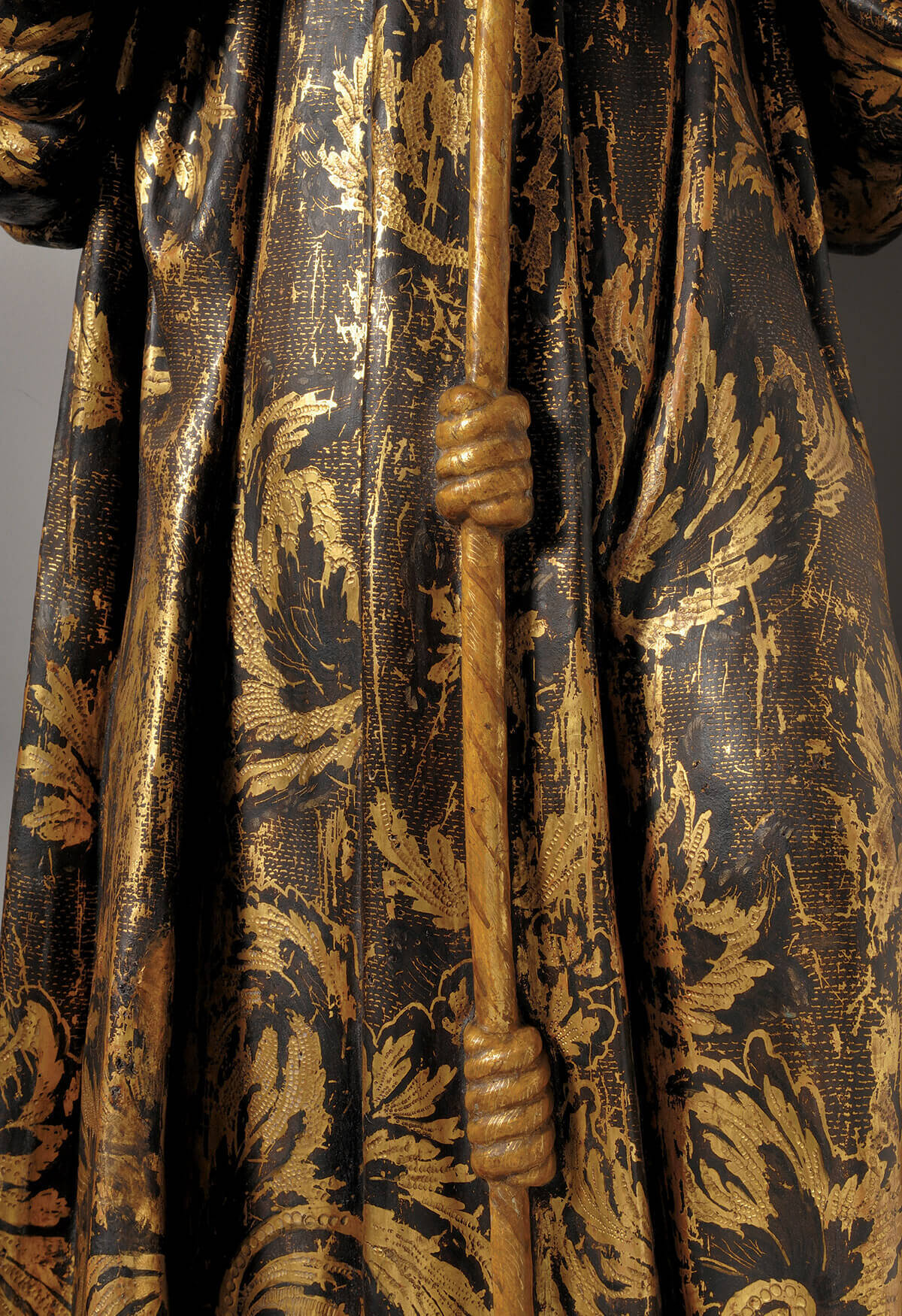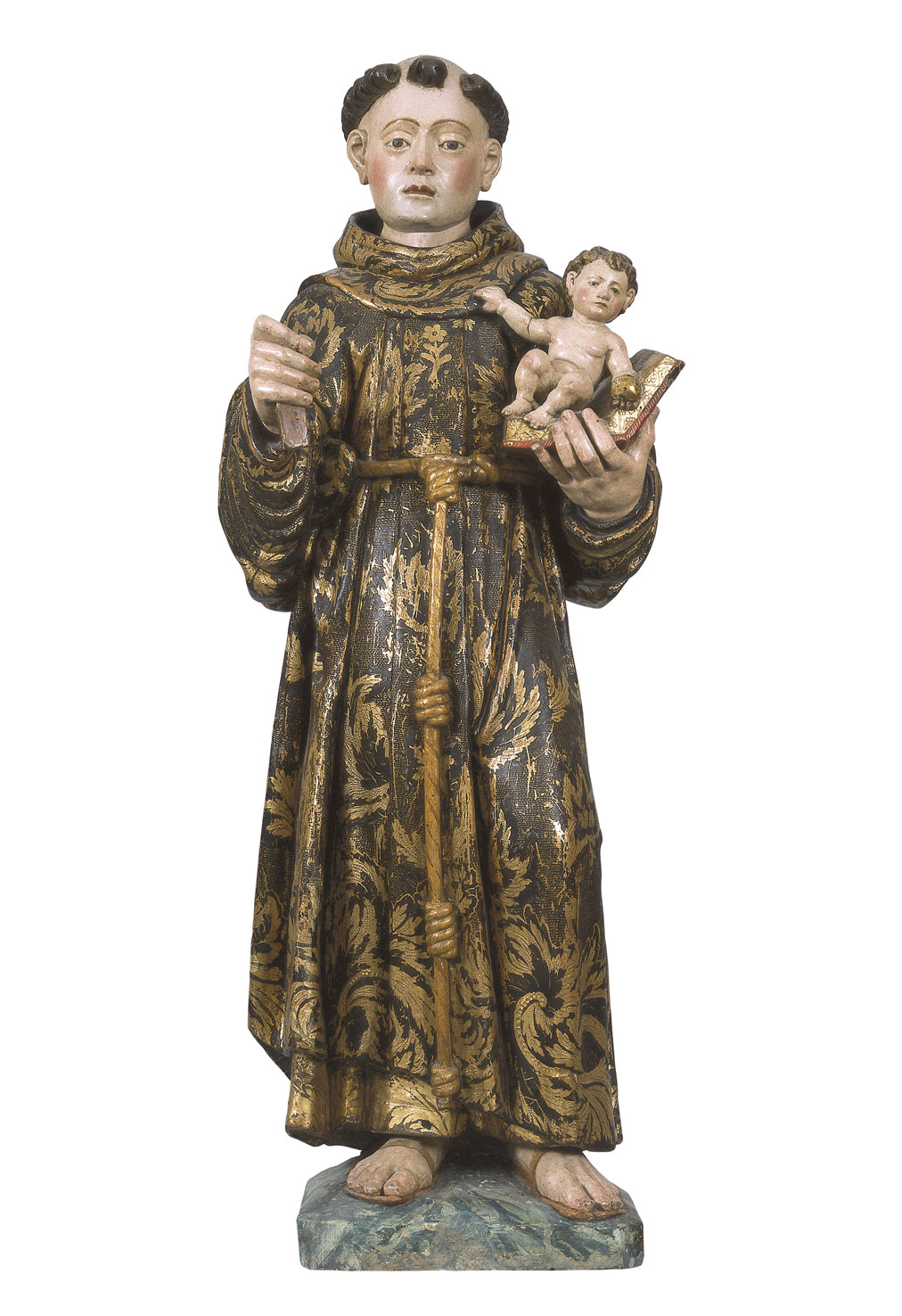St. Anthony

PLACE/DATE
Portugal, 1st half of the 17th century
MATERIALS
Painted and gilt wood
DIMENSIONS
121 x 48 x 50 cm
INV
ESC.94
This sculptural figure of one of the most popular Portuguese saints, and the most important Franciscan after St. Francis of Assisi, shows him wearing sandals and the traditional habit of the Mendicant Order, tied at the waist with a cord with the three knots, alluding to the vows of poverty, chastity and obedience.
In it we can recognise one of his best-known iconographic attributes: the open book on which rests the image of the Infant Jesus which, curiously, clings to the saint's hood. The latter holds a golden ball in his left hand, symbolising the sphere of the world, and a fragment of an incomplete cross in his right hand.
Born around 1195 in Lisbon, he died in Padua, where he was buried in 1231. This iconography of the saint was widely disseminated by Portuguese sculpture of the Counter-Reformation period.

